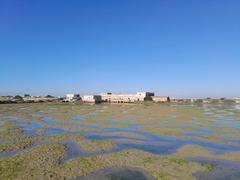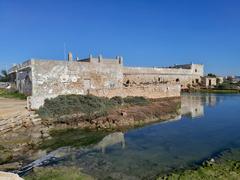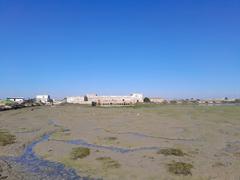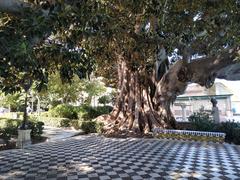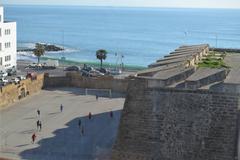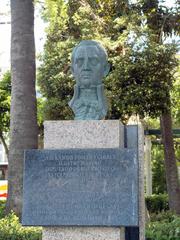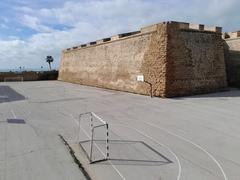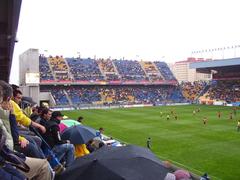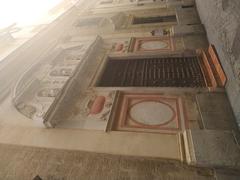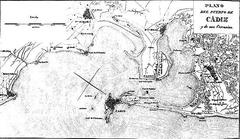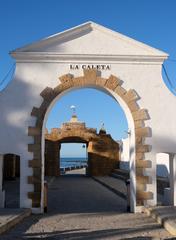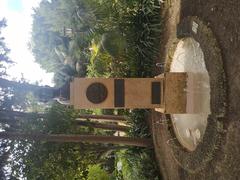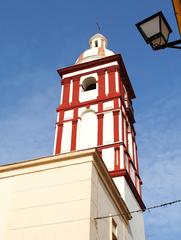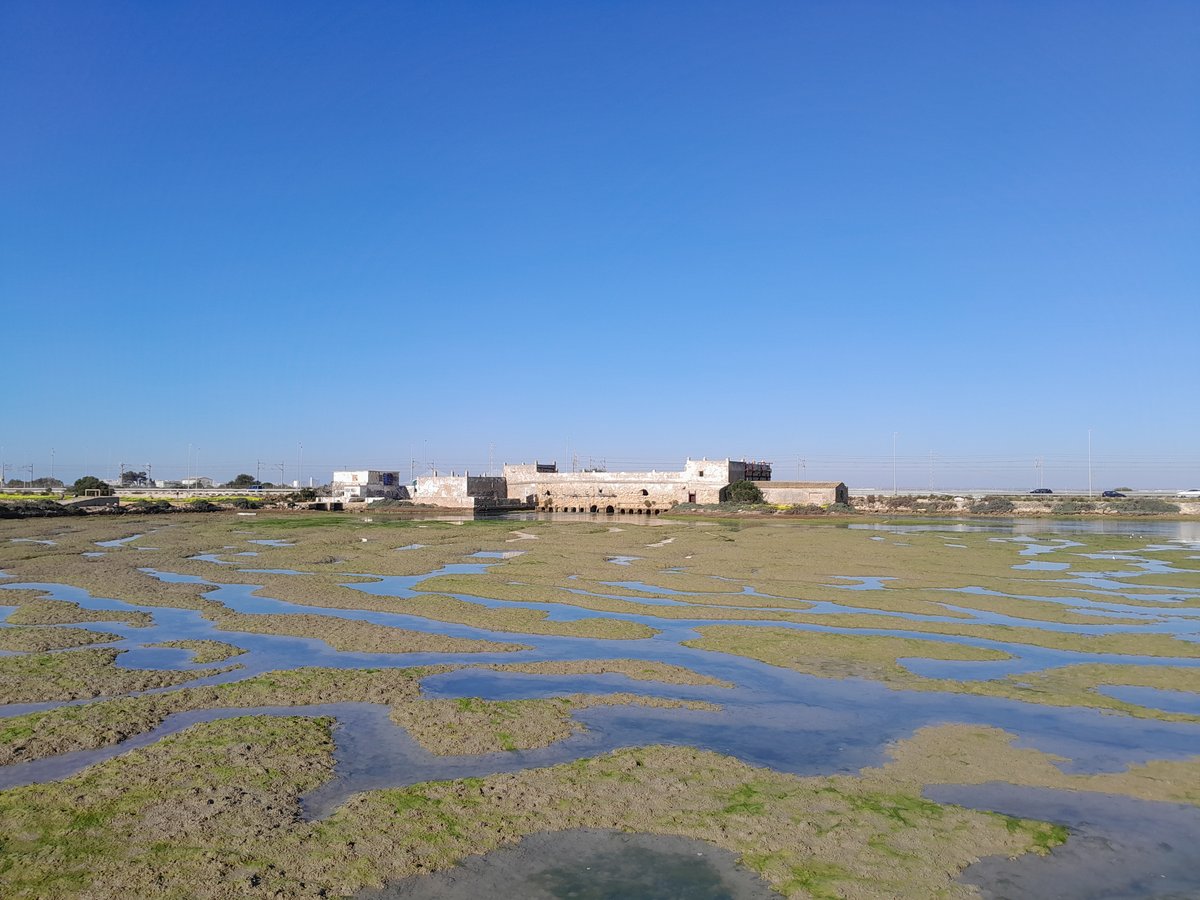
Molino de Marea del Río Arillo: Visiting Hours, Tickets, and Complete Guide to Cádiz Historical Sites
Date: 14/06/2025
Introduction
The Molino de Marea del Río Arillo is a singular example of preindustrial tidal mill technology, nestled within the protected landscapes of the Bahía de Cádiz Natural Park in southern Spain. This historic site offers travelers a unique window into the region’s industrial heritage, blending human ingenuity with the rhythms of nature. In this guide, discover the mill’s historical significance, architectural features, conservation challenges, visiting hours, ticketing, accessibility, and nearby attractions to help you plan an enriching visit to one of Cádiz’s most evocative historical sites. For the latest updates, consult official tourism resources and the Bahía de Cádiz Natural Park websites. (patrindustrialquitectonico.blogspot.com, diariodecadiz.es, Rutas del Sur)
Table of Contents
- Historical Background
- Visiting the Molino de Marea del Río Arillo
- Frequently Asked Questions (FAQs)
- Conservation and Responsible Visiting
- Summary and Next Steps
- References
Historical Background
Origins and Development
Constructed in the late 18th century, the Molino de Marea del Río Arillo exemplifies the technological advancements of its era. Built to harness the power of the tides for industrial milling, the structure sits strategically near the boundary between Cádiz and San Fernando. Its robust construction—using local oyster stone (piedra ostionera)—was specifically designed to withstand the saline, humid environment of the marshes (patrindustrialquitectonico.blogspot.com).
Tidal mills like this one were an ingenious response to the Bay of Cádiz’s natural environment. The mill filled its reservoir with seawater during high tides, then used the controlled outflow as the tide receded to power up to twelve grinding stones, making it one of the largest and most productive mills in the region (Rutas del Sur).
Role in the Salt Industry
The surrounding salt flats (salinas) have defined the Cádiz region’s economy since Roman times. By the 18th and 19th centuries, the mill played a dual role: processing grain for local consumption and supporting salt production. Its integration into the wider salinas network was an example of sophisticated water management and industrial planning, fueling the local economy and positioning Cádiz as a key export hub in Europe and the Americas (Rutas del Sur).
Architectural and Technological Features
The mill’s architecture reflects both its industrial purpose and the need for resilience against weather and potential coastal threats. Thick masonry walls, limited windows, and a layout accommodating storage, milling, and living quarters characterize the structure. Hydraulic engineering feats—such as sluice gates and reservoirs—enabled the efficient use of tidal cycles, providing a dependable energy source even when wind or river flow was unreliable (patrindustrialquitectonico.blogspot.com).
Decline and Conservation
With the advent of steam engines and electricity in the late 19th and early 20th centuries, tidal mills like the Molino de Marea del Río Arillo became obsolete. The decline of the salt industry and changes in trade routes further eroded its economic base. By the mid-20th century, the mill was largely abandoned and succumbed to deterioration from environmental exposure, vandalism, and lack of maintenance (diariodecadiz.es).
Despite being proposed for legal protection in the Catálogo General del Patrimonio Histórico de Andalucía in 2000, comprehensive restoration has yet to occur. The site remains in a state of picturesque ruin, but holds immense potential for heritage tourism and education (Academia.edu).
Visiting the Molino de Marea del Río Arillo
Hours, Tickets & Accessibility
- Visiting Hours: The site is generally open year-round during daylight hours, typically from 9:00 AM to 6:00 PM. There are no formal entrance gates or set closing times, but some areas may be restricted due to safety concerns or ongoing deterioration. Always check with local tourism offices or the Bahía de Cádiz Natural Park website for current access information.
- Tickets: Admission is free as the mill is part of the natural park. Guided tours or special events may have a fee; inquire locally or through official park channels.
- Accessibility: Terrain is uneven, with silted and sometimes muddy paths, and interior access can be limited or restricted for safety. The site is not fully wheelchair accessible, so visitors with mobility challenges should plan accordingly.
How to Get There
- By Car: The mill is located near the boundary of Cádiz and San Fernando. Parking is available close to the start of the “Sendero Tres Amigos – Río Arillo” trail.
- By Public Transport: Options are limited, but buses or taxis from Cádiz or San Fernando can bring you near the trailhead. The site is then accessible on foot via marked nature trails (Wikiloc).
- Walking Route: The “Sendero Tres Amigos – Río Arillo” is a flat, well-marked route approximately 6–8 kilometers round trip, passing salt flats, bird observatories, and marshlands before reaching the mill (Rutas del Sur).
Travel Tips and Safety
- Best Time to Visit: Autumn and spring are ideal, with mild weather and peak bird migration. Early mornings and late afternoons offer the best light and wildlife viewing.
- What to Bring: Sturdy footwear, sun protection, water, and binoculars for birdwatching are recommended. There are no facilities along the route, so plan accordingly.
- Safety: Stay on marked trails to protect the fragile marsh ecosystem and for your own safety. Weather can change quickly; check forecasts before your visit.
Nearby Attractions
- Salt Pans (Salinas): Observe traditional salt production and the iconic white salt mounds.
- Bird Observatories: The marshes are a birdwatcher’s paradise, with up to 70,000 migratory birds in winter—look for flamingos, avocets, stilts, and more.
- Casa Salinera de Tres Amigos: Ruins of the salt workers’ house provide further historical context.
- Other Cádiz Historical Sites: Consider visiting the Castillo de San Sebastián, Salinas de Cádiz, or the restored Molino de Mareas “El Caño” in El Puerto de Santa María (INES Ingenieros Consultores).
Frequently Asked Questions (FAQs)
Q: What are the visiting hours?
A: The site is open during daylight hours, typically from 9:00 AM to 6:00 PM. Check local sources for any restrictions.
Q: Is there an entrance fee?
A: No, the site is free to access. Guided tours or events may require a fee.
Q: Are guided tours available?
A: Occasionally, guided tours are offered by local environmental or heritage organizations. Contact the Bahía de Cádiz Natural Park visitor center for details.
Q: Is the site accessible for people with disabilities?
A: Accessibility is limited due to uneven and sometimes muddy terrain. Interior access may be restricted for safety reasons.
Q: Can I bring pets?
A: Yes, pets are allowed but must be kept on a leash to protect wildlife.
Q: Are there any facilities on site?
A: No, there are no restrooms or refreshment points along the route. Prepare accordingly.
Conservation and Responsible Visiting
The Molino de Marea del Río Arillo is protected by regional heritage laws and lies within a sensitive natural park. Visitors are urged to:
- Respect all signage and barriers
- Stay on marked trails to preserve the fragile marsh ecosystem
- Avoid disturbing wildlife, especially during nesting and migration periods
- Share photographs and experiences with local heritage groups to support conservation awareness
Local organizations continue to advocate for the mill’s restoration, highlighting its potential as an educational and sustainable tourism asset (Academia.edu).
Summary and Next Steps
The Molino de Marea del Río Arillo is a living emblem of Cádiz’s maritime and industrial heritage—a rare site where history, technology, and nature converge. Despite its fragile state, the mill and its surroundings offer a multifaceted visitor experience, from evocative ruins to vibrant bird habitats and salt flats. Responsible, well-prepared visitors not only enrich their own journeys but also help preserve this irreplaceable heritage for future generations.
Ready to explore? Download the Audiala app for interactive maps, guided tours, and up-to-date information on the Molino de Marea del Río Arillo and other Cádiz historical sites. Combine your visit with other regional attractions, and support ongoing restoration efforts by sharing your experiences and staying informed through official tourism portals.
References
- (patrindustrialquitectonico.blogspot.com)
- (diariodecadiz.es)
- (Academia.edu)
- (INES Ingenieros Consultores)
- (Rutas del Sur)
- (Wikiloc)
